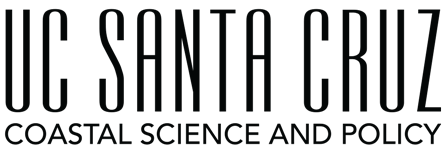
Below is an excerpt from CSP Director Anne R. Kapuscinski’s Commencement Comments to the Class of 2025 on June 12, 2025:
We’re here to celebrate your major accomplishments in completing your CSP graduate degree. You expanded and deepened your knowledge, skills and professional networks. Most crucially, you applied these enhanced capacities to each pursue a real-world opportunity to advance goals such as conservation, restoration, sustainability, equity, and climate resilience in coastal settings. You learned how to apply a laser focus to a solution path. A few days ago, at the CSP Virtual Symposium, we saw the inspiring ways in which each of you moved the ball forward on your selected issue.
Alongside this joy, we’re also gathered at a terrifying time. We see imposition of tyranny in the United States at an unprecedented scale and speed. We’re already witnessing horrible consequences in the US and beyond. The current federal administration is executing the most comprehensive attack in US history on higher education; on the nation’s entire scientific enterprise; on independent science; on other areas of inquiry and creativity; on rights protected by the US Constitution for of all residents, on racial justice and on much more.
So…graduates… how shall you keep moving forward to advance your visions for a better world and also to resist tyranny? I suggest you do it by practicing Active Hope — an approach to taking on big challenges, especially when obstacles to solving the issue seem insurmountable. Joanna Macy, renown eco-philosopher and systems thinker, and Dr. Chris Johnstone, a specialist in the psychology of resilience and positive change, co-authored the book entitled, Active Hope: How to face the mess we’re in without going crazy.
Quoting them: “The word hope has two different meanings. The first … involves hopefulness, where our preferred outcome seems reasonably likely to happen. But if we require this kind of hope before we commit ourselves to an action, our response gets blocked in areas where we don’t rate our chances well. The second meaning [of hope] is about desire… for the kind of world [we] long for…”
“Active Hope is about becoming active participants in bringing about what we hope for. Like gardening… it is something we do rather than have. It is a process we can apply to any situation, and involves three key steps. First, we take in a clear view of reality; second, we identify what we hope for in terms of the direction we’d like things to move in or the values we’d like to see expressed; and third, we take steps to move ourselves or our situation in that direction.”
That sure sounds like the steps you learned in the CSP curriculum. It’s what you did to design and implement your capstone projects. This means you have what it takes—individually and in community—to practice Active Hope. Remember one more thing: History shows that authoritarian leaders undermine evidence and truth, doing so in nefarious ways that include coopting and silencing scientists. As graduates in Coastal Science and Policy, I urge you to stick with evidence, science and equity and justice as you practice Active Hope in your work and life.
Photos from CSP Graduation Ceremony:





















